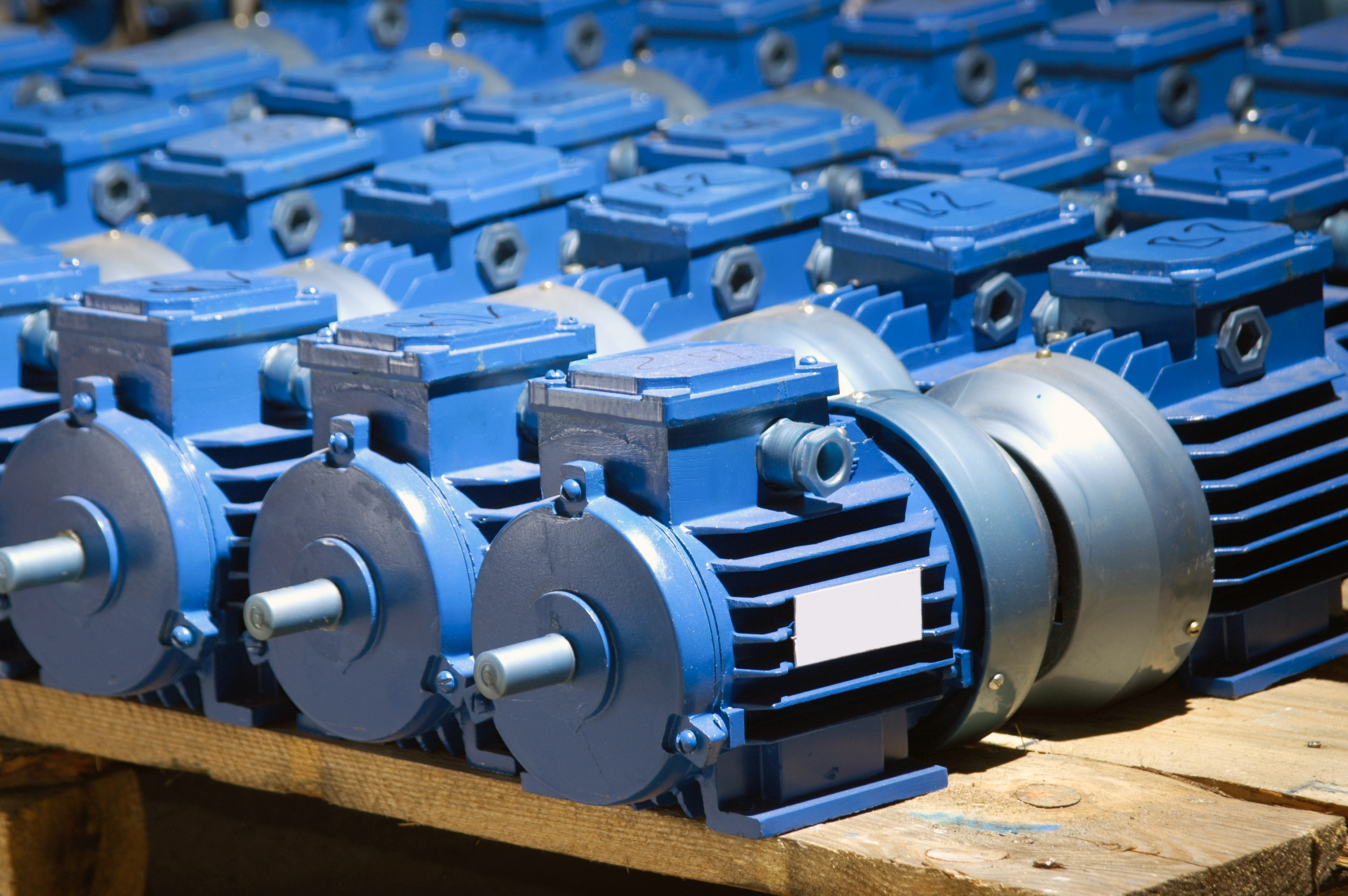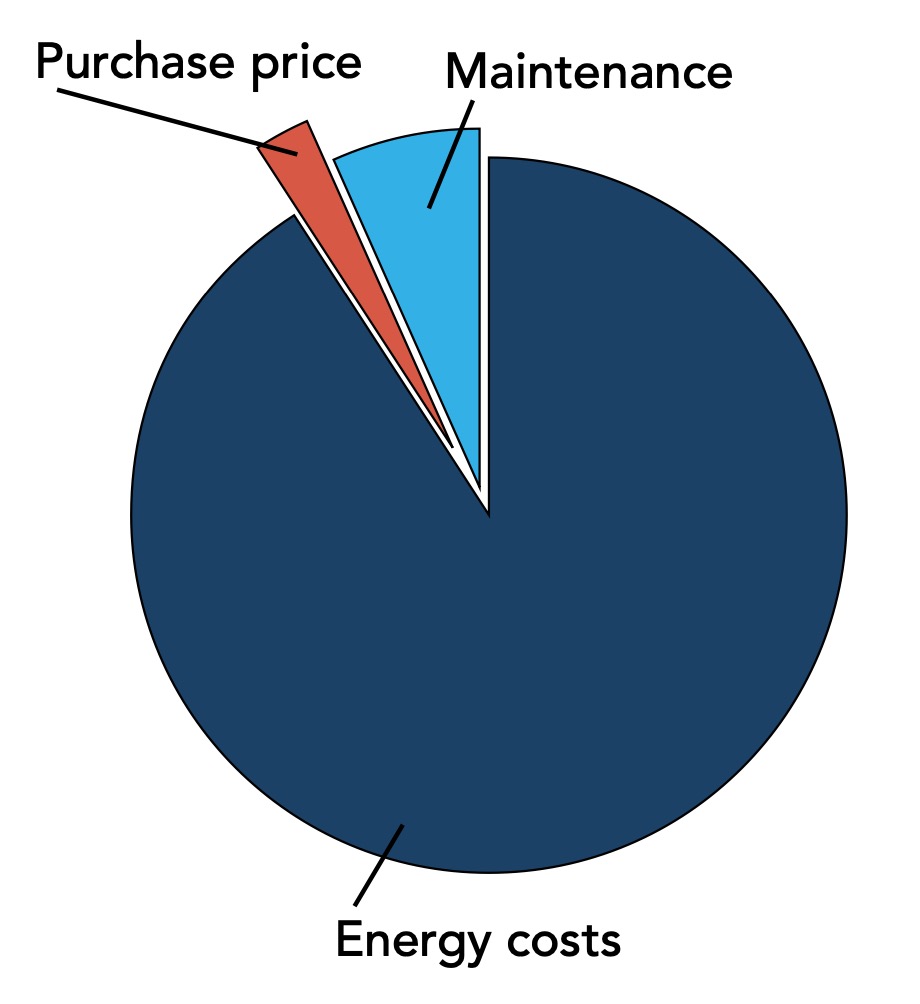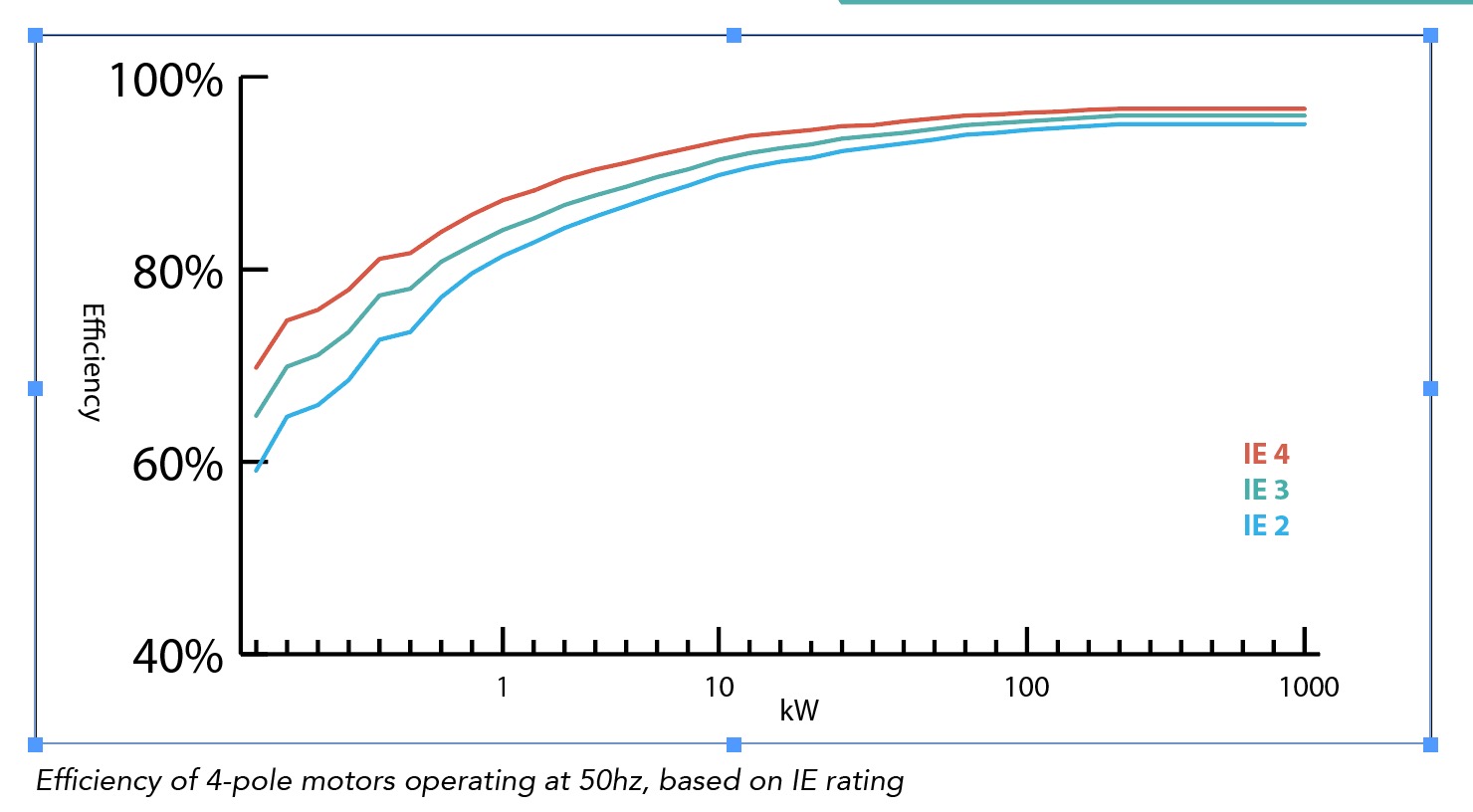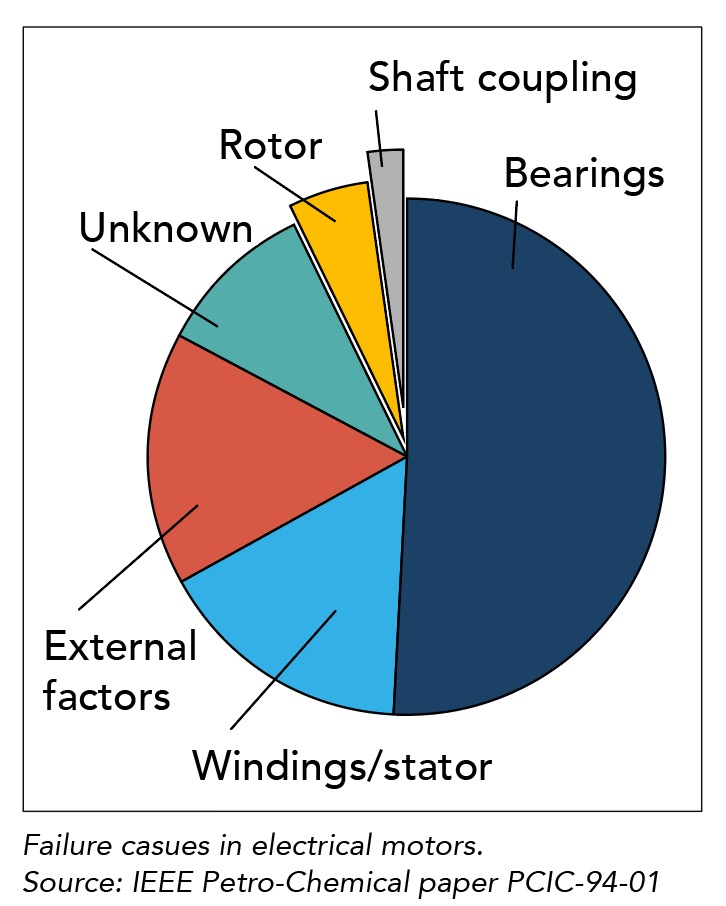
7 minute read
The AEMT - Total Cost of Ownership guide for electric motors
FOCUS ON THE TOTAL COST OF OWNERSHIP OF YOUR MOTORS TO REDUCE COSTS AND IMPROVE YOUR ENVIRONMENTAL IMPACT
Analysing the Total Cost of Ownership (TCO) of an electric motor looks not only at the initial capital cost but also the lifetime cost of running it. So, as well as the purchase and installation costs, this approach considers the energy consumed along with ongoing maintenance and repair costs.
The TCO of a motor will vary based on its type, size and application, but for a typical motor, the purchase cost may only be 2-3% of its TCO. Aside from the cost benefits available by reducing the energy consumed by electric motors, there is the potential for significant environmental benefits as well. According to research from the World Energy Council, electric motors and electric motor-driven systems are estimated to account for almost 50% of all global electricity consumption. If that consumption were to be dropped by just 10%, that could reduce the global demand for electricity generation by 1,425TWh, which is equivalent to the total amount of electricity used by India, the world’s third largest consumer.
CALCULATING TOTAL COST OF OWNERSHIP
There is no one-size-fits-all approach to calculating the TCO of a motor, but all costs associated with the lifetime running of a motor need to be factored in, including:
• Purchase price
• Installation cost (this may include any operator training required)
• Running cost (based on the amount of energy consumed and the hours the motor will be operational for)
• Maintenance (this will include routine tasks such as inspection and lubrication, plus periodic maintenance such as bearing replacement)
• Downtime (depending on the application, unplanned downtime, in particular, could have sizable cost implications in terms of lost output)
• Remaining value (based on the type of motor, there may be a scrap or resale value when it reaches the end of its planned operational life)

REDUCING TCO
There are clear financial and environmental benefits to reducing the TCO of a motor. While each application will vary, there are several factors which can go some way to achieving beneficial reductions.
1 - Variable Speed Drives
In many motor-driven systems, the motor will be over powered for the task it performs. This excess output may be managed with the addition dampers or throttling valves. While these approaches may achieve the required output, they can unnecessarily waste energy and have other adverse side effects, such as shortening a motor’s life.
While many modern VSDs incorporate functions specific to their application, their primary function is to moderate the energy input to a motor to match the required output. Adding one to a motor-driven system can deliver significant energy cost savings and improve the motor’s operation life. Other benefits include improved process control, managed start-up and stop procedures, and power quality management.
The potential energy savings achievable by adding a VSD will depend on various factors such as the application, the motor’s specification and the duty required. If, through the introduction of a VSD, the motor’s speed can be reduced by 20%, energy savings of 50% will be made. But as an example, in many cases, motordriven pumps and fans will be overspecified for the task they are performing.
2 - Improved efficiency motors
In the majority of cases, the efficiency of a motor is classified by an International Efficiency or IE rating. Four classes are defined in the IEC 60034-30-1 standard, covering 2, 4, 6, or 8 pole motors with rated outputs from 0.12kW to 1000kW and rated voltages from 50V to 1000V.

IE1 is Standard Efficiency, IE2 is High Efficiency, IE3 is Premium Efficiency, and IE4 is Super-premium Efficiency. Many motor manufacturers also produce motors
that meet the IE5 class, labelled Ultrapremium Efficiency, which, while currently outside the IEC standard, is due to be incorporated in the next revision. Across the world, legislation is in place to govern the energy efficiency credentials of new motors being put into service, as outlined in the AEMT’s Eco Design Regulations for Electric Motors guide (bit.ly/AEMTEcoDesign). However, this does not cover motors which have already been put into service.
Many motors in service are lowefficiency models, some manufactured before the first IE rating was introduced. As energy losses are reduced by around 20% or even more between each class, replacing an older, less efficient motor with a new model, one, two or even three classes more efficient, offers the potential for significant energy cost savings.
Many AEMT members can carry out energy audits on your existing systems to help you understand the savings that can be made through the addition of VSDs or by replacing lower-efficiency motors with a higher-efficiency model, the latest list can be found at bit.ly/AEMTSurvey.
3 - Other considerations
While the energy consumed by a motordriven system will undoubtedly be the most significant contributor to its TCO, there are other considerations to be made. Most notable is the reliability of a motor and the system it powers.

If a motor unexpectedly fails or has to be stopped, this can interrupt production or the process the motor is powering. In many cases, a system stopping will have financial implications due to the cost of lost activity or output. In some sectors –food production is a good example – this cost can be significant. Plus, a poorly operating motor can lose efficiency and increase its environmental footprint.
Proper installation, setup, and ongoing maintenance are essential when looking to minimise the TCO of a motor.
Bearing failure is widely regarded to account for around 50% of all motor breakdowns. This is often the result of poor lubrication, electrical erosion, vibration or misalignment. Excess temperature, which can damage a motor’s electrical insulation, is another common cause of failures, as is the ingress of dirt.
Proper installation and setup can ensure that a motor starts life without these issues. At the same time, widely available condition monitoring solutions that can perform constant measurements across your motor fleet will detect signs that these and many other issues are emerging in time for them to be addressed before they cause a critical interruption. However, it is essential to recognise that condition monitoring should not simply replace planned routine maintenance; rather, the two approaches should complement each other.
A motor supplier, or maintenance partner, will be able to advise you on the best solutions and approach to ensure the reliable and efficient running of your motor-driven systems.

